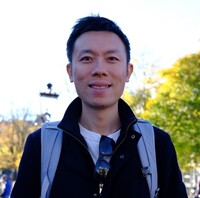& T.-K. Hsiao*, P. Cova Fariña*, S. D. Oosterhout, D. Jirovec, X. Zhang, C. J. van Diepen, W. I. L. Lawrie, C.-A. Wang, A. Sammak, G. Scappucci, M. Veldhorst, E. Demler, and L. M. K. Vandersypen, Exciton Transport in a Germanium Quantum Dot Ladder, Physical Review X 14, 011048 (2024).
& C. J. van Diepen*, T.-K. Hsiao*, U. Mukhopadhyay, C. Reichl, W. Wegscheider, and L. M. K. Vandersypen, Quantum Simulation of Antiferromagnetic Heisenberg Chain with Gate-Defined Quantum Dots, Physical Review X 11, 041025 (2021).
& C. J. van Diepen, T.-K. Hsiao, U. Mukhopadhyay, C. Reichl, W. Wegscheider, and L. M. K. Vandersypen, Electron Cascade for Distant Spin Readout, Nature Communications 12, 77 (2021).
& T.-K. Hsiao, C. J. van Diepen, U. Mukhopadhyay, C. Reichl, W. Wegscheider, and L. M. K. Vandersypen, Efficient Orthogonal Control of Tunnel Couplings in a Quantum Dot Array, Physical Review Applied 13, 054018 (2020).
& T.-K. Hsiao, A. Rubino, Y. Chung, S.-K. Son, H. Hou, J. Pedrós, A. Nasir, G. Éthier-Majcher, M. J. Stanley, R. T. Phillips, T. A. Mitchell, J. P. Griffiths, I. Farrer, D. A. Ritchie, and C. J. B. Ford, Single-Photon Emission from Single-Electron Transport in a SAW-Driven Lateral Light-Emitting Diode, Nature Communications 11, 917 (2020).
& T.-K. Hsiao, H.-K. Chang, S.-C. Liou, M.-W. Chu, S.-C. Lee, and C.-W. Chang, Observation of Room-Temperature Ballistic Thermal Conduction Persisting over 8.3 Μm in SiGe Nanowires., Nature Nanotechnology 8, 6 (2013)

